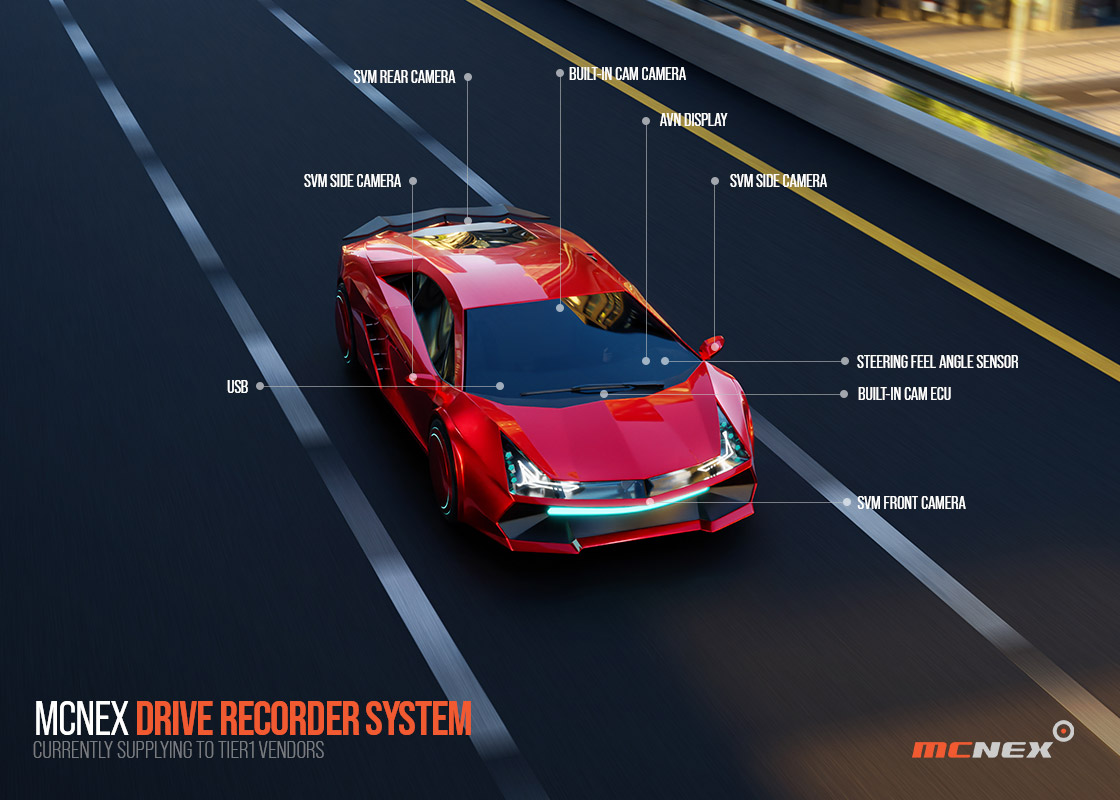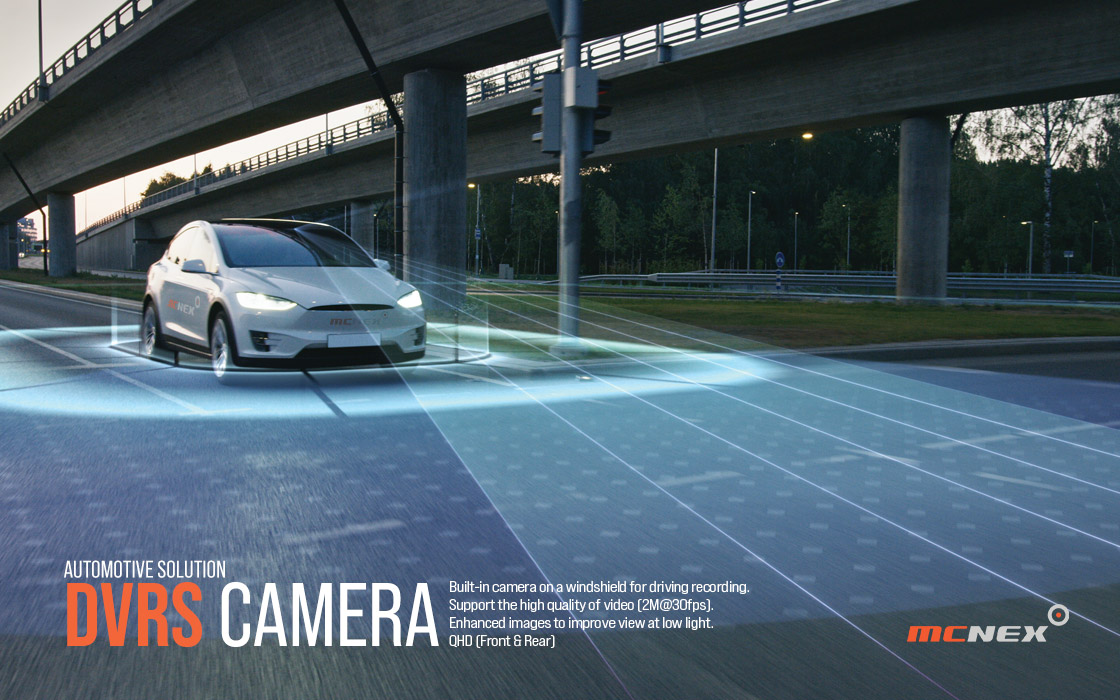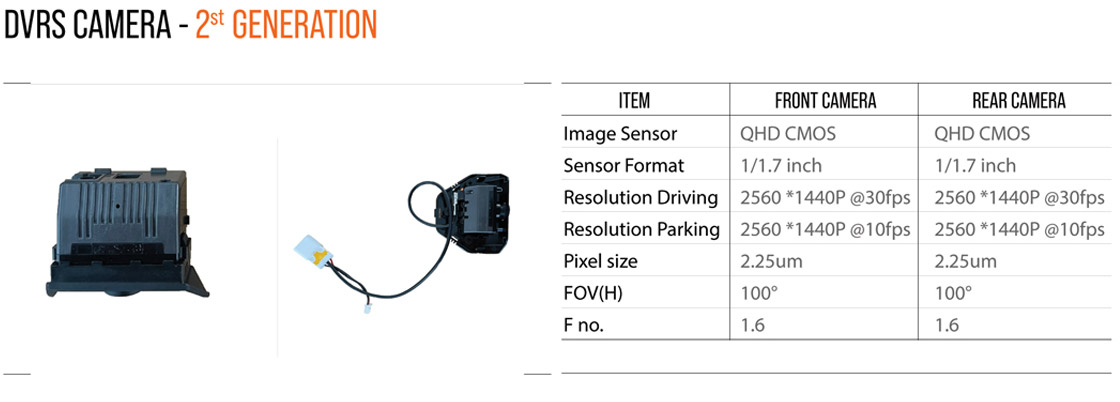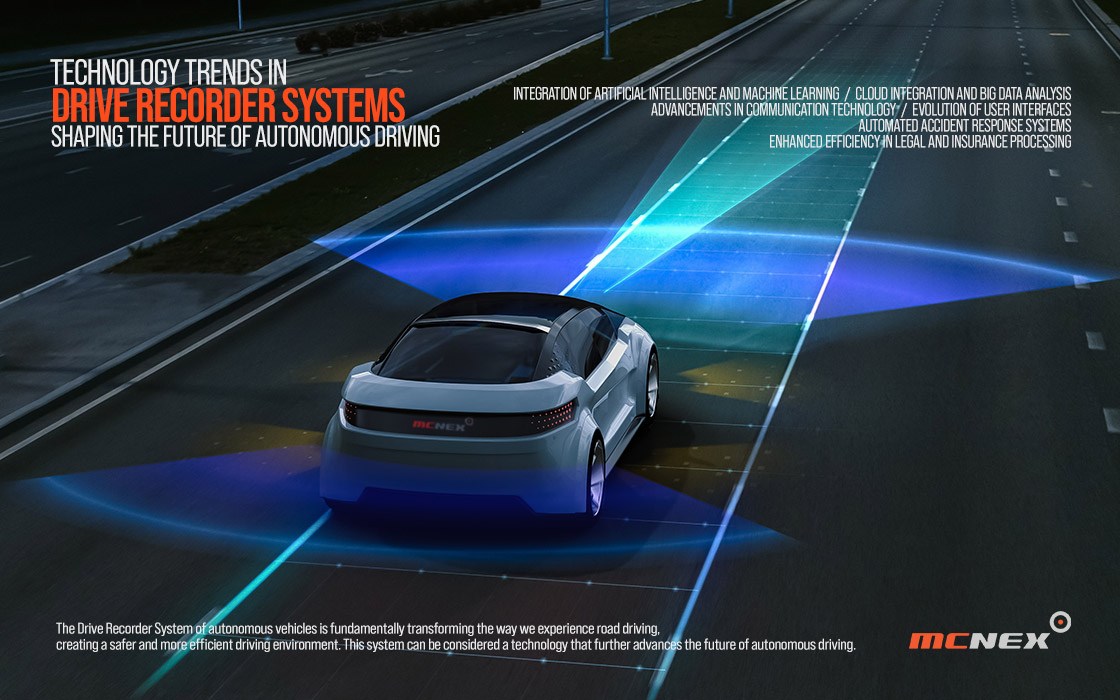NEWSROOM
Here we share with you various MCNEX stories.
- TitleThe core technology responsible for ensuring the safety of autonomous driving, DVRS. DATE 2024-01-22
-
The core technology responsible for ensuring the safety of autonomous driving, DVRS.
MCNEX-Drive Recorder System
With the advancement of autonomous driving technology, various technologies that enable safe driving have gained significant attention. Among them, the DVRS (Drive Recording System) is one of the most critical components and can be considered as the "eyes" of autonomous vehicles.
As the adoption of autonomous vehicles continues to grow, DVRS plays an essential role in ensuring vehicle safety and accident prevention. This system goes beyond simple recording functions; it performs vital functions for autonomous vehicles, significantly enhancing the safety of vehicle operations.

The DVRS (Drive Recorder System) has the following functions and roles
The safety of autonomous vehicles relies on advanced technology. The MCNEX Drive Recorder System records and stores the internal and external conditions of a vehicle while it is in operation. This system combines computer vision technology and data analysis to comprehensively manage sensor data and visual information, enabling the vehicle to accurately perceive its surroundings and make appropriate judgments. Additionally, this system plays a crucial role in determining liability in the event of an accident.
DVRS serves as a critical technology essential for enhancing the safety and operational capabilities of autonomous vehicles by recording and managing real-time data and visual information. Moreover, it plays a vital role in clarifying responsibility in the case of accidents.
The core functions of DVRS (Drive Recorder System)
1. Driving Data Recording
The Drive Recorder System records all data related to the vehicle's operation, including speed, location, driving route, steering angle, brake usage, and more. This information can serve as vital analytical material in the event of an accident.
2. Video Recording
External cameras continuously record the surroundings of the vehicle. This is essential for the vehicle to perceive its environment, including other vehicles, pedestrians, and the condition of the road. Additionally, internal cameras can monitor the driver's actions and state.
3. Collision Detection and Recording
When a collision is detected, the Drive Recorder System automatically saves data and video from just before and after the accident. This plays a crucial role in analyzing the cause of the accident and provides essential information for insurance claim processing.



The role of DVRS (Drive Recorder System)
Enhanced Safety
The Drive Recorder System records various situations that can occur during autonomous driving, enabling the autonomous driving algorithm to learn from this data and make better driving decisions, thus enhancing safety.
Accident Prevention and Response
The Drive Recorder System detects the possibility of accidents in advance and provides warnings, as well as immediate responses in the event of an accident. This not only facilitates autonomous safety measures but also provides critical information to the driver.
Legal Evidence and Analytical Data Utilization
The data recorded by the Drive Recorder System holds value as objective and reliable legal evidence in case of legal disputes. It aids in expediting accurate and efficient insurance claim processes in the event of an accident. It helps clarify liability, analyze accident causes, and establish future preventive measures, leading to increased customer satisfaction.
Real-Time Monitoring and ResponseThe Drive Recorder System integrates with vehicle sensors to monitor the vehicle's surroundings in real-time and responds promptly when detecting risks. This enables the vehicle to avoid collisions and issue warnings for immediate driver or autonomous system response.
Improved Driver Experience
The data from the Drive Recorder System provides valuable feedback to the driver, helping improve driving habits and promoting safer driving. For instance, the system can detect driver attention and fatigue levels and issue appropriate warnings.
Maintenance and Service Enhancement
Recorded data is used to analyze vehicle performance and predict necessary maintenance, contributing to the long-term maintenance of vehicle performance and enabling efficient service and maintenance scheduling.
The functions and roles of the Drive Recorder System make the driving of autonomous vehicles safer and more convenient to integrate. The continuous improvement and development of this system are essential for autonomous vehicles to comply with safety regulations and minimize dangers on the road. The Drive Recorder System embedded in autonomous vehicles will play a significant role in redefining the safe and comfortable road driving experience for drivers, beyond just a tool for recording accidents.
"The Technological Trends of the Drive Recorder System Illuminating the Future of Autonomous Driving"
With the advancement of technology, the Drive Recorder System (DVRS) is constantly evolving, and with higher resolution cameras, improved recognition capabilities, and AI-based data processing technologies, it is creating more sophisticated autonomous driving systems.
The Drive Recorder System of autonomous vehicles is fundamentally changing the way we experience road driving, and this system can be considered a technology that creates a safe and efficient driving environment and advances the future of autonomous driving by one more step.

Integration of Artificial Intelligence and Machine Learning
With the advancement of artificial intelligence technology, the Drive Recorder System will be able to understand the surrounding environment better and make better decisions in more complex situations. This is achieved through the evolution of predictive modeling and decision-making algorithms. In the future, the system will integrate more advanced AI and ML algorithms to more accurately recognize and predict the surrounding environment, and these developments will help it respond more quickly and accurately even in sudden situations.
Cloud Integration and Big Data Analysis
Transferring data generated from vehicles to the cloud and analyzing patterns from large data sets is an important trend that improves the overall efficiency and safety of the autonomous driving system. Cloud-based platforms provide real-time information on vehicle performance, road conditions, and traffic patterns, allowing autonomous driving algorithms to be continuously updated.
Advancement of Communication Technology
The Drive Recorder System will enable safer and more efficient driving through real-time communication between vehicles (V2V) and between vehicles and infrastructure (V2I). This will contribute to reducing accident risks by sharing real-time traffic information through integration with traffic management systems.
Evolution of User Interface
The Drive Recorder System will make it easier and more intuitive to understand the driving conditions of the vehicle. This will be aided by real-time video streaming through the vehicle's internal display, and by enabling interaction through virtual reality (VR) or augmented reality (AR), enhancing the driving experience.
Automated Accident Response System
In the future, the Drive Recorder System will be combined with an automated accident response system. This will allow the vehicle to automatically contact emergency services in the event of an accident and transmit the accident location and related data for a swift response.
Increased Efficiency in Legal and Insurance Processing
The data recorded by the Drive Recorder System will have value as legal evidence, and will assist in speeding up and accurately processing compensation with insurance companies in the event of an accident. This will lead to faster accident processing times and improved customer satisfaction.